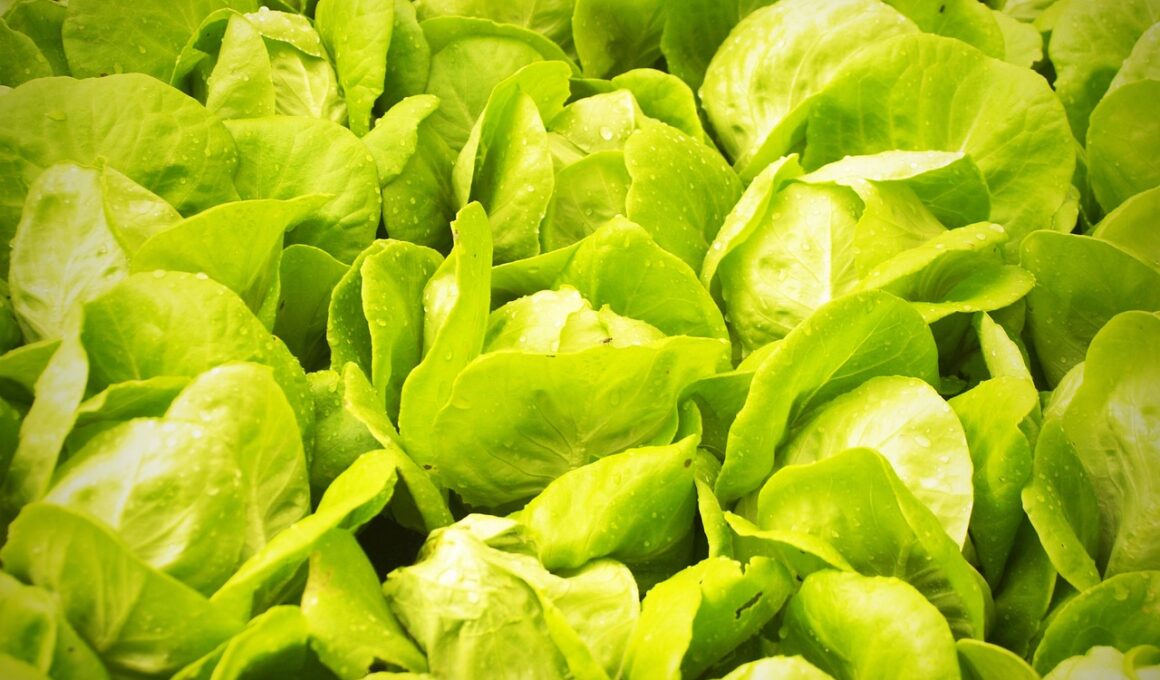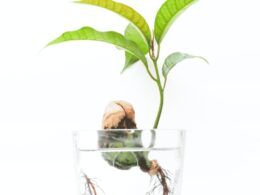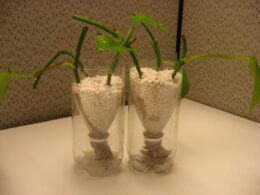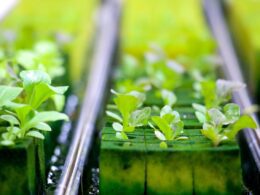Are you interested in growing your own fresh produce but don’t have a lot of space or time for traditional gardening methods? The Kratky method may be just what you need.
This simple and low-maintenance technique allows you to grow plants hydroponically, without the need for electricity, pumps, or timers. Plus, it’s perfect for beginners who want to dip their toes into the world of hydroponics without getting overwhelmed with complex systems.
In this article, we’ll walk you through the basics of the Kratky method and show you how to set up your own system. We’ll also provide tips on how to maintain your plants and troubleshoot common issues that may arise.
With the Kratky method, you can enjoy the benefits of fresh, homegrown produce without the hassle of traditional gardening. So, let’s get started!
Gather Your Materials
Gathering the necessary materials is a crucial step in successfully executing the Kratky procedure. Materials preparation is key to ensuring that your plants thrive in the system.
First, you need to select your container. A clear plastic container is the ideal choice because it allows you to see the roots and water levels, but any container that can hold water and has a lid will do.
Once you have your container, the next step is to prepare your materials. You will need a growing medium, such as rockwool or perlite, to support your plants. You’ll also need nutrient solution, which can be purchased or made at home. To make your own nutrient solution, you’ll need to mix the appropriate amounts of nutrients, such as nitrogen, phosphorus, and potassium, with water.
In addition to these materials, you’ll need a net pot or basket to hold your plant, and a lid to cover your container. With these materials in hand, you’re ready to move on to the next step: setting up your Kratky system.
Set Up Your System
Now that you’ve gathered your materials, it’s time to set up your kratky system.
First, fill your container with nutrient solution up to the designated level.
Next, plant your seedlings in net pots and place them in the solution, making sure the roots are submerged.
Finally, cover your container to prevent algae growth and maintain a consistent environment. Remember to check on your plants regularly and top off the solution as needed.
Fill Your Container with Nutrient Solution
To get started with the Kratky method, simply pour your chosen nutrient solution into your container. Make sure that the solution covers the roots of your plant. This is an important step in ensuring that your plant receives the necessary nutrients for healthy growth.
There are different types of nutrient solutions available for hydroponic gardening, each with its own benefits and drawbacks. It’s important to research and choose the best solution for your specific plant and growing conditions.
Once you’ve filled your container with the nutrient solution, the next step is to place your plant into the container and let it grow. With the Kratky method, you can grow healthy plants without the need for complicated hydroponic systems.
Plant Your Seedlings
Time to get those little baby plants in the container! Let’s plant those seedlings and watch them grow with the Kratky method. Before you start, make sure your seedlings are healthy and ready for planting. Here are some seedling care tips to keep in mind:
- Water your seedlings a day before planting to ensure they’re well-hydrated.
- Gently remove the seedlings from their pots or trays and loosen the roots if they’re tangled or compacted.
- Handle the seedlings delicately to avoid damaging the stems or leaves.
Once your seedlings are ready, it’s time to plant them in the nutrient solution. Follow these steps for a successful planting:
- Make a hole in the net cup or lid of your container.
- Place the seedling in the hole and support it with some growing medium, such as clay pellets or peat moss.
- Adjust the water level so that the bottom of the net cup is just above the surface of the nutrient solution.
With your seedlings planted, all you need to do is wait and watch them grow. Stay tuned for our next subtopic on harvest tips!
Cover Your Container
Don’t let your hard work go to waste – keep your precious plants protected by covering your container! Using covers for Kratky containers has many benefits that can help your plants thrive. By covering your container, you are shielding your plants from harsh weather conditions and pests that can cause damage to your plants.
Not only does covering your container offer protection, but it can also help regulate the temperature and humidity levels within the container. This can prevent your plants from becoming too hot or too dry, which can lead to stunted growth or even death. Additionally, covering your container can help retain moisture, which is crucial for the success of the Kratky method. Overall, using covers for Kratky containers is a simple and effective way to ensure the health and safety of your plants.
| Benefits of Covering Kratky Containers | ||||||
|---|---|---|---|---|---|---|
| Protection from harsh weather conditions | Regulates temperature and humidity | Prevents pests from damaging plants | ||||
| Retains moisture for plant growth | Simple and effective method | Ensures health and safety of plants | Reduces the need for frequent watering | Improves overall plant growth and yield | Helps to maintain a clean and organized garden environment |
Maintain Your Kratky System
Keep your Kratky system healthy by regularly checking the water level and nutrient solution. This is essential for your plants to thrive.
Regular maintenance ensures that your plants have access to the necessary nutrients and that the pH level of your nutrient solution remains stable. Check the water level every few days and top it up if necessary. You should also check the pH level of your nutrient solution regularly and adjust it if needed.
Nutrient management is crucial for the success of your Kratky system. You must monitor the nutrient level to ensure that your plants are getting everything they need to grow. Check the nutrient level of your solution once a week. If you notice that the level is low, add more nutrients to the solution. However, be careful not to add too much as this can lead to nutrient burn, which can harm your plants.
Apart from nutrient management, you should also keep an eye on the overall health of your plants. Look for signs of stress or disease, such as yellowing leaves or wilting. If you notice any issues, take immediate action to address them.
By maintaining your Kratky system regularly, you’ll be able to grow healthy plants and enjoy a bountiful harvest.
Is The Kratky Method Suitable for Growing Carrots Hydroponically?
The Kratky method, a popular hydroponic technique, can indeed be used for growing carrots hydroponically. However, due to the carrot’s long growing cycle and need for larger nutrient reservoirs, it may not be the ideal method. Certain modifications might be necessary, such as adjusting nutrient levels and optimizing root aeration, to achieve successful results when growing carrots hydroponically.
Troubleshoot Common Issues
If you find algae growing in your Kratky system, don’t panic! It’s a common problem that’s easily solved by blocking out light or changing the water.
Root rot is another issue that can arise, often caused by over-watering or poor water quality. To prevent this, make sure your water levels are appropriate for your plant and consider using a hydroponic-specific nutrient solution.
Lastly, pests and diseases can wreak havoc on your system, so be sure to regularly inspect your plants and take action at the first sign of trouble.
Algae Growth
Algae thrive in the Kratky system due to its low-maintenance and self-sustaining nature. However, algae growth can be prevented by keeping the lighting conditions in check. Too much light can promote the growth of algae, while too little light can stunt the growth of your plants. You can use a timer to regulate the amount of light your plants receive, ensuring that they get enough but not too much.
Another way to prevent algae growth is by keeping your water clean. Algae thrive in dirty water, so it’s important to change the water regularly. You can also add a small amount of hydrogen peroxide to your water to kill any existing algae and prevent new growth.
Algae growth may seem like a daunting problem, but with a few simple steps, you can keep your Kratky system clean and your plants healthy.
Root Rot
Watch out for root rot! Your plants can suffer from it if they’re constantly submerged in water. Their roots can become mushy and black, like decaying fruit. Here are some things to keep in mind to avoid this problem:
- Make sure your plants have proper drainage. They should not be sitting in water for extended periods of time.
- Use a well-draining growing medium, such as perlite or vermiculite. This promotes good air flow to the roots.
- Avoid overwatering your plants. Excess water can suffocate the roots and promote the growth of harmful bacteria.
- Keep a close eye on your plants for any signs of root rot, such as wilting leaves or a foul odor.
- If you notice signs of root rot, take action immediately to prevent the spread of the disease.
Preventive measures are key when it comes to root rot. However, if you do find yourself dealing with this issue, there are treatment options available. One common treatment involves removing the affected plant from its pot, gently washing away any infected soil, and trimming away any damaged or diseased roots. You can then replant the healthy portion of the plant in fresh soil and adjust your watering habits to prevent future occurrences. In severe cases, you may need to use a fungicide to eliminate the root rot and restore the plant’s health. By taking these steps, you can ensure that your plants stay healthy and thrive using the Kratky method.
Pests and Diseases
Now we’re going to talk about pests and diseases that can threaten your hydroponic garden. Common pests include spider mites, aphids, and whiteflies. These insects can suck the nutrients out of your plants and cause them to weaken or die.
In addition, diseases like powdery mildew and fungal infections can quickly spread throughout your garden and ruin all your hard work. To prevent these issues, it’s important to take preventative measures.
This can include regularly inspecting your plants for signs of pests or diseases, keeping your grow area clean and free of debris, and using natural remedies like neem oil or insecticidal soap. You can also introduce beneficial insects like ladybugs or lacewings, which will eat the harmful pests and prevent them from multiplying.
By taking these steps, you can protect your hydroponic garden and ensure a healthy harvest.
Enjoy Your Homegrown Produce!
Get ready to savor the fruits of your labor with the delicious produce grown in the comfort of your own home! With the Kratky method, you can grow fresh and healthy veggies without the need for soil or complicated watering systems. Maximizing your yield is easy, and all you need to do is choose the right plants and provide them with the right conditions.
One of the biggest benefits of growing your produce at home is the satisfaction that comes with eating fresh, organic food. With the Kratky method, your plants will be free of pesticides and other harmful chemicals, giving you peace of mind and a healthier diet. Plus, you’ll save money on groceries while reducing your carbon footprint, making it a win-win situation for you and the environment.
So, go ahead and enjoy your homegrown produce! From crunchy cucumbers to juicy tomatoes, you’ll be amazed at the flavors and textures you can achieve with just a little bit of effort.
Whether you’re a seasoned gardener or a newbie, the Kratky method is perfect for anyone who wants to grow their food without the hassle. So, what are you waiting for? Get started today!
Frequently Asked Questions
How does the Kratky method compare to other hydroponic systems in terms of yield and nutrient uptake?
Looking at the yields of Kratky systems compared to traditional and organic hydroponic systems, the Kratky method has been found to be highly effective. In fact, some studies have shown that Kratky systems can produce higher yields than those grown in traditional hydroponic methods.
Additionally, by maximizing nutrient uptake in Kratky systems, plants are able to access all of the nutrients they need without the addition of external fertilizers. This is because the Kratky system works by providing a continuous supply of water and nutrients to the plant, allowing it to absorb nutrients at its own pace.
As a result, Kratky systems are a great option for those who want to grow plants with minimal maintenance, while still achieving high yields and nutrient uptake.
Can the Kratky method be used for growing plants that require high levels of oxygen in the root zone?
If you’re looking to grow plants that require high levels of oxygen in the root zone, you may be wondering if the Kratky method is suitable. The Kratky method is a type of hydroponics that doesn’t use any pumps or electricity, relying instead on a stagnant nutrient solution.
While this method can be effective for certain types of plants, it may not provide enough oxygenation for plants with high oxygen needs. To address this, you could incorporate oxygenation techniques such as adding an air stone or using root zone aeration to introduce more oxygen to the nutrient solution.
By doing so, you may be able to adapt the Kratky method to suit your plant’s specific needs and achieve optimal growth.
What types of plants are best suited for the Kratky method?
When it comes to indoor and container gardening, the Kratky method can be a great option for certain types of plants. This method is best suited for plants that don’t require high levels of oxygen in the root zone, such as leafy greens, herbs, and some types of fruiting plants.
One of the benefits of this method is that it requires very little maintenance once set up, making it a great option for beginner gardeners or those with limited time. Overall, if you’re looking to try out a low-maintenance, hands-off approach to indoor gardening, the Kratky method may be worth considering.
How do you prevent algae growth in the nutrient solution?
To prevent algae growth in your nutrient solution, proper maintenance is key. Algae thrive in conditions with excess light, nutrients, and warmth, so it’s important to keep your solution in a shaded area and to avoid overfeeding your plants.
You can also add an algaecide to your solution as a preventative measure. Regularly checking and adjusting the pH and nutrient levels can also help keep the solution in balance and prevent algae growth.
By staying on top of nutrient solution maintenance, you can ensure that your plants have a healthy growing environment and avoid any potential issues with algae.
Is it possible to automate the nutrient solution replenishment process in a Kratky system?
Automating the nutrient solution replenishment process in a Kratky system is possible with an Automated Kratky replenishment system. This system uses sensors to monitor the nutrient level in the reservoir and automatically replenishes the solution as needed.
It takes the guesswork out of maintaining the nutrient solution and ensures that your plants are always getting the proper nutrients they need to grow. By using this system, you can be sure that your plants are getting the best care possible, without the worry of manual nutrient level monitoring.
Conclusion
Now that you know how to set up and maintain your Kratky system, it’s time to enjoy the fruits of your labor.
With this method, you can grow a variety of produce right in your own home, without the need for soil or complicated watering systems.
Just remember to keep an eye on your water levels and nutrient levels, and make any necessary adjustments along the way.
As you continue to experiment with the Kratky method, don’t be afraid to try new things and see what works best for you.
With a little patience and dedication, you’ll soon be harvesting your very own homegrown produce, and enjoying all the benefits that come along with it.
So get started today, and see how the Kratky method can transform your gardening experience!









